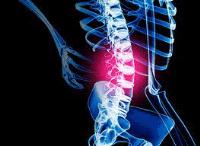 Add My Company
Add My Company
Sign In
Taking the Pain Out of Site Work
28-08-2011

A look at handling solutions for construction sites
In this issue of Safety Matters, we focus on manual handling issues in the construction industry. If you are involved in safety you will already know that musculoskeletal injuries (MSDs) include problems such as low back pain, joint injuries and repetitive strain injuries of various sorts. Using information available from the HSE, we have identified construction activities that are vulnerable to MSDs and have linked through to some handling solutions available. Firstly, let’s look at the facts:-
The Manual Handling Operations Regulations 1992 (as amended 2004) apply to all construction work. They set out a framework for employers to tackle the risks from manual handling.
Typical construction activities that can cause injury are:
Manual handling – the biggest cause of injury is manual handling, which includes lifting, lowering, pushing, pulling and carrying;
Repetitive tasks – handling heavy objects is not the only cause of injury. Harm can also result from doing a task repetitively, even if the load is relatively light (e.g. bricklaying), or where the person’s body position is less than ideal (e.g. tying rebar); and
Other high risk tasks – include: block laying, handling pipework, laying kerbs and paving slabs, moving and installing plasterboard and installing mechanical and electrical equipment at height.
Managing the risks
The first priority is to avoid the hazard. Where this is not reasonably practicable you need to assess risks and take effective action.
Prevent unnecessary lifting and carrying. Position loads by machine and plan where they need to be put;
Avoid heavy materials that could cause problems if they need to be moved by hand. Choose lighter materials, order smaller bags of cement and aggregates. Keep materials such as concrete blocks dry;
Use simple mechanical aids and make sure they are kept well maintained;
Make sure workers are trained to use lifting equipment and other aids safely;
Consider the size, strength and training of those needed for those doing the lifting;
Use lifting equipment to lighten the load:
Avoid repetitive lifting, handling heavy building blocks or other masonry units and installing heavy lintels by hand.
repetitive movements;
working too long without breaks;
awkward working positions (e.g. bending or crouching) or restricted space (eg working in a roof void);
high job demands or time pressure, which may mean that workers resort to brute force rather than using a mechanical handling solution.
The injuries are often caused by a combination of:
the work itself (e.g. the weight of a load or the force that needs to be applied);
the work environment, including weather conditions; and a worker's physical capability.
You may also find it useful to talk to workers about the tasks they do at work and how they are actually done. Ask if any of them have experienced any back pain.
The following on-site activities have been hyper-linked to handling solutions which you may to consider useful.
asbestos removal;
block laying;
ceiling fixing;
cladding/sheeting;
curtain wall installation;
dry lining;
ductwork installation;
ground works;
loading and unloading;
mechanical and pipe work;
piling operations;
plastering;
pre-cast concrete installation;
roads and paving;
scaffolding;
structural steel work;
tunnelling;
window installation.
The HSE provides essential information on manual handling and musculoskeletal disorders (MSD)
Dale Lifting and Handling online catalogue is a One-Stop-Shop for all your handling needs.
Here are some examples of site handling solutions we can provide:
Mini site material conveyors Material lifts
Vacuum lifting devices Platform safety gates
Crane forks Concrete segment lifters
For more information on Taking the Pain Out of Site Work talk to Dale Lifting
Enquire Now
List your company on FindTheNeedle.

